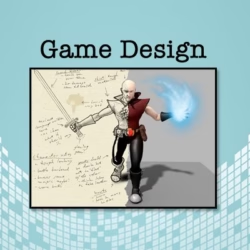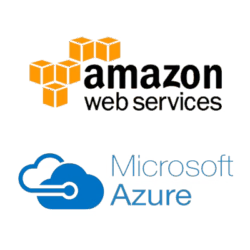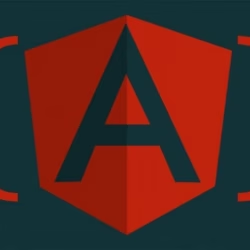- Developers
- Developer Blog
- Software Development
- Minimum Viable Product Strategy: How to Execute An MVP In a Business?
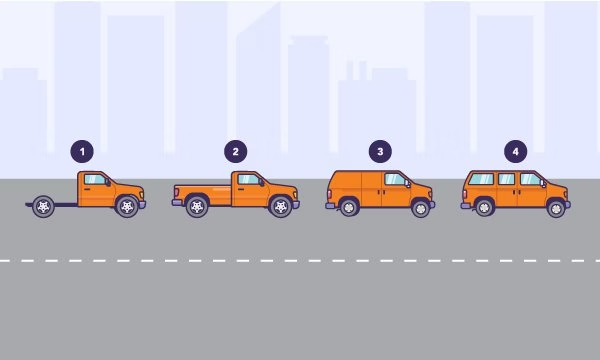
profile

By Aran Davies
Verified Expert
8 years of experience
Aran Davies is a full-stack software development engineer and tech writer with experience in Web and Mobile technologies. He is a tech nomad and has seen it all.
Want to know a minimum viable product strategy to minimize the risk while you create and execute an MVP in your business?
You’ve come to the right place. We will discuss here how to plan your minimum viable product strategy successfully in detail.
The Risk of Not Embracing Innovation

What does the risk of not embracing innovation look like? A short answer is: “Eastman Kodak”!
George Eastman and Henry A. Strong founded Kodak in 1888, and the company held a dominant position in the photography market for most of the 20th Century. Read this Wikipedia page about Kodak for more information.
Steven Sasson was a 24-years old engineer in 1975, and he was working at Eastman Kodak. In that year, he invented digital photography by creating the first digital camera.
He demonstrated his invention to the Kodak executives, who couldn’t grasp the potential of this giant breakthrough. They didn’t think that digital photography will appeal much to consumers.
The Kodak executives didn’t want to cannibalize the film business of the company, therefore, they quietly shelved this invention. Kodak finally took a late plunge in the world of digital photography, however, the company had to file for bankruptcy in 2012.
Read “What Kodak said about digital photography in 1975” to learn about how Kodak paid the price for not embracing innovation.
Minimum Viable Product: A Low-Risk Tool for Embracing Innovation
The Eastman Kodak executives made a crucial error. They didn’t think that digital photography will be popular, however, they didn’t validate their hypothesis.

Get a complimentary discovery call and a free ballpark estimate for your project
Trusted by 100x of startups and companies like
This is where a “Minimum Viable Product” (MVP) can make a difference. You see, businesses build many hypotheses when planning a product launch. They make assumptions about their potential customers, geographies that could be their markets, the buying behavior of people in those geographies, etc.
While market research can help you to gain insights from the market, there’s nothing like a functional product if you want real market feedback. MVP is a functional product with minimal features that you create with the least possible effort, as you can read in “Defining MVP, MMF, MMP, and MMR”.
You create an MVP and launch it in the market. With the customer feedback you receive from the market, you validate your hypotheses and assumptions.
You can go back to the drawing board if the market didn’t receive the product well. As you can see, you received real user feedback spending limited time and resources.
On the other hand, the customers might show interest in the product and want more features. You can then enhance the product. Read more about MVP in “Minimum Viable Product (MVP)”.
How to Plan a Minimum Viable Product Strategy to Create and Execute an MVP in Your Existing Company?
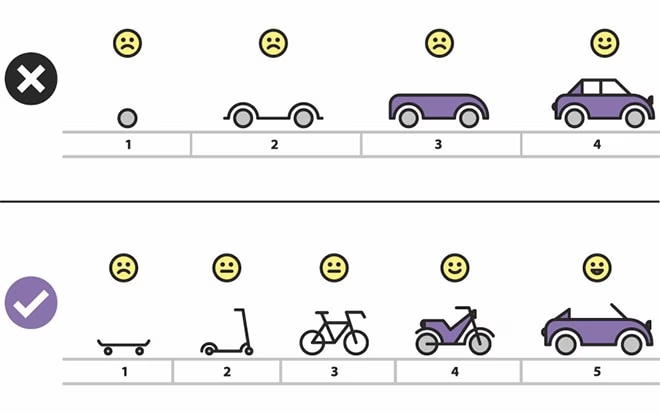
Let’s see how you can create and execute an MVP in your existing company while minimizing the risks. This involves the following:
1. Eliminate disruptions to your existing business
While creating an MVP is an innovation that caters to your future business objectives, you need to manage your existing business in parallel. You need to do the following:
- Ensure you have enough talented people to manage both the MVP as well as your existing business. As Jim Collins, the noted management guru has said, you ought to have the right people in the right places. When you have that in place, you can navigate the inevitable complexities of business. Read more about this observation from Collins in “First who…then what?”.
- As far as your IT systems are concerned, you must have enough people to manage the MVP creation as well as the existing IT operations.
- You ought to plan your IT infrastructure well for your MVP and ensure that your existing IT operations face no disruption. While you might choose a multi-tenant public cloud for creating your MVP, your existing IT applications might be on a private cloud. If you plan to utilize your existing IT applications as part of your MVP, then you might need to use a hybrid cloud. Read “What are public, private, and hybrid clouds?” for more insights.
- You need to ensure application security for your MVP app so that your reputation doesn’t suffer from a severe information security incident. If you plan to use your existing IT apps via APIs, then you also need to address API security.
2. Decide the features of your overall app and MVP
I assume that you have identified the business opportunities and customer needs, therefore, you now need to plan the features of your app and MVP. You need to take the following steps:
- Onboard a competent IT project manager (PM), an IT architect, and a team of business analysts.
- The discovery sessions: You ought to involve your business stakeholders and the newly onboarded IT team and conduct one or more discovery sessions. These sessions could last 2-3 days, and these are intense sessions. You understand the potential users, their needs, and how they would use your app. Define the business value from the users’ perspective, moreover, decide on the metrics to measure the success of the product.
- “Pain and Gain” maps: Map the features according to the users’ pain points they will address and rank them in a “Pain and Gain” map. Read “Pain-Gain map” for more insights.
- Prioritize the features for the MVP: You have gained sufficient insights about the features that you should offer and their impacts. Now, you should use tools like opportunity statements and prioritization matrix to prioritize them. With this, you can decide which features to include in the MVP.
Read our guide “How to effectively manage an MVP in your enterprise company” for more insights.
3. Plan for the MVP IT infrastructure
You should look at a managed cloud services provider for the MVP IT infrastructure since it ensures quicker provisioning of computing resources. Managed cloud services can also lower your IT infrastructure costs, as you can read in “Creating a minimum viable product for the enterprise: No trivial task”.
Using a “Platform-as-a-Service” (PaaS) platform can help you to develop web apps quickly. PaaS platforms enable you to focus on development by managing several aspects, e.g.:
- Cloud infrastructure;
- Networking;
- Operating system;
- Middleware;
- Runtime environment;
- API integration;
- DevOps tools;
- “Application Performance Monitoring” (APM) solutions;
- Auto-scaling solutions.
AWS Elastic Beanstalk is a well-known PaaS platform, as I had explained in “10 top PaaS providers”.
Are you developing a mobile app as part of your MVP? Consider using a “Mobile-Backend-as-a-Service” (MBaaS) platform since such platforms manage aspects like cloud infrastructure, persistent storage, etc. for you.
You can focus on the mobile app front end since you don’t need to manage the back end. MBaaS platforms like AWS Amplify offer several advantages, e.g.:
- You can implement features like user management and push notifications easily.
- Scaling a mobile app and integrating APIs become easier with such a platform.
Read our guide “How to Choose the Best Mobile Backend as a Service (MBaaS)?” for more insights.
Hire expert developers for your next project
1,200 top developers
us since 2016
4. Choose the right IT architecture pattern and technology stack
Your project plan should maximize the chances of success for your MVP, therefore, choosing the right IT architecture pattern is important. There are several popular architectural patterns, e.g.:
- Layered (n-tier);
- Event-driven;
- Microkernel;
- Microservices;
- Space-based.
Our guide “Large Enterprise Java Projects Architecture” can help you to choose the pattern that works for you.
Your choice of technology stack will vary based on your project scope, e.g.:
- You can consider Node.js if you are developing a web app.
- If you’re developing a cross-platform mobile app, then you can use React Native. It’s a great cross-platform mobile development framework that delivers a near-native user experience and performance. Read more about it in “3 big benefits of React Native development”.
- You can use Kotlin or Java for native Android development, whereas Swift is a great choice for native iOS development.
- If your MVP involves “Artificial Intelligence” (AI) or “Machine Learning” (ML) development, then you can use Python.
Read more about choosing the right technology stack for your MVP in our guide “How to Create a Minimum Viable Product for Your Enterprise Company”.
You should also use effective development tools, e.g.:
- Eclipse IDE for developing a web app;
- Android Studio for developing a native Android app;
- Xcode for developing a native iOS app.
5. Onboard and organize your MVP development team
It’s time to onboard your development team, therefore, consult our guide “How to Find a Good Software Developer”. You need the following roles:
- UI designers;
- Web and mobile developers, depending on your MVP scope;
- Testers;
- DevOps engineers.
MVP development in an existing company while minimizing the risks can be complex. You need to onboard a team that works cohesively, therefore, consider hiring a field expert development team instead of freelancers.
Our guide “Freelance app development team vs. field expert software development teams” can help you with this.
MVP development is a fast-paced endeavor where you need a relentless focus on delivering tangible value to your customers. You should foster a climate of collaboration in the team, therefore, I recommend that you organize the team as a “Scrum team”.
A “Scrum team” is an empowered team where developers and testers work together, and the PM acts as the “Scrum master”. The processes and documentation in a Scrum team are geared towards delivering business value to customers, as I have explained in “How to build a Scrum development team?”.
6. Minimize the risk to your minimum viable product strategy and existing business by focusing on application security
While the MVP may be separate from your existing business, if the MVP has a crucial application security vulnerability then it can impact the reputation of your company. Minimize this risk by mitigating the top application security risks, which are as follows:
- Injection;
- Broken authentication;
- Sensitive data exposure;
- XML external entities (XXE);
- Broken access control;
- Security misconfigurations;
- Cross-site scripting (XSS);
- Insecure deserialization;
- Using components with known vulnerabilities;
- Insufficient logging and monitoring.
Read “OWASP top 10 security risks – part IV” for guidance on how to mitigate these risks.
If you access your existing IT applications via APIs in your MVP, then you should also identify and mitigate key API security risks. You should do the following:
- Use authentication tokens;
- Encrypt data and use digital signatures;
- Use quotas, throttling, and API gateways.
You can read “API security” for more insights.
7. Focus on the UI to make the minimum viable product strategy a success
The UI carries a lot of importance, therefore, design it appropriately to improve the chances of success. You should do the following:
- Use industry-standard best practices for the web app UI design;
- Follow “Human Interface Guidelines” for the iOS app UI design, and “Material design” guidelines for the Android app UI design;
- Use the most-suitable navigation menu pattern, color scheme, and icons for designing the mobile app UI.
Our guide “5 tips to create a sleek MVP” can help you.
Hire expert developers for your next project
8. Design and develop APIs
Since APIs can provide a consistent and easy way for the front end to access the backend, I recommend you design and develop APIs as part of the MVP. In addition to security, focus on the following while developing APIs:
- Use the right tools and database solutions;
- Support multiple platforms;
- Design effective rules for requests and responses;
- Design effective URL paths.
Read our guide “How to build RESTful API for your mobile app?” for more insights.
Planning a Minimum Viable Product Strategy?
While this guide can help you to develop and execute an MVP while managing your existing business, such projects can be complex. Engage a reputed software development for such projects, however, read our guide “How to find the best software development company?” before you engage one!
If you, as a business CTO, are still in search of an experienced software development partner, DevTeam.Space can assist you with MVP development and deployment via its field-expert software developers community.
You can easily partner with these software developers experienced in launching market-competitive software solutions by sending us your initial product specifications. One of our account managers will get in touch with you to discuss further how we can help.
Further Reading
Here are a few articles that might also interest you:
Best Game Design Document Template – DevTeam.Space
Do you want to explore the game design document template? In this article, we will discuss the same in detail. While most people consider making games to be all about game development, it always starts off with a game design document....
Continue readingAzure vs. AWS: Cloud Platform Comparison
Let's start this AWS vs. Azure comparrison by taking a quick look at how the two cloud providers explain their cloud service offerings: Microsoft Azure: Azure is a comprehensive set of cloud services that developers and IT professionals use...
Continue readingAngular 3: Release Date, Features, and Changes – DevTeam.Space
Wondering about Angular 3: Release Date, Features and Changes? That’s an excellent market with many opportunities to be explored. Besides all the money, innovating in software is a chance to make a positive impact on people’s quality...
Continue readingFrequently Asked Questions on Minimum Viable Product Strategy
A minimum viable product approach is a way to test a product idea and its features during the product development process itself. It is a basic product with core features to see how it works in the user market through a maximum amount of validated learning from customers. Different methodologies like agile, lean startup methodology, etc. are used for the development of minimum viable products.
Dropbox, Airbnb, Groupon, etc. are top examples of businesses that adopted an MVP approach.
The main purpose of a minimal viable product is to collect users’ responses to a business idea or a product before developing and launching it completely as a full-fledged product or a service.

Alexey Semeney
Founder of DevTeam.Space
Hire Alexey and His Team To Build a Great Product
Alexey is the founder of DevTeam.Space. He is award nominee among TOP 26 mentors of FI's 'Global Startup Mentor Awards'.
Alexey is Expert Startup Review Panel member and advices the oldest angel investment group in Silicon Valley on products investment deals.
